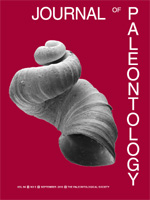New and old species and genera of the family Guadalupiidae (spherulitic hypercalcified demosponges of the order Agelasida) are described or redescribed from the West Texas Permian. The entire family is reviewed and observations are made on the epibionts, growth patterns, functional morphology, ecological relationships, morphologic variability, modular structure, and evolutionary history of these largely reef-dwelling sponges. The stratigraphic distribution of species is also noted; many are limited and can define zones. The new genera Exovasa and Incisimura and the new species Guadalupia auricula, G. cupulosa, G. ramescens, G. microcamera, G. vasa, Cystothalamia megacysta, Lemonea simplex, Incisimura bella, and Exovasa cystauletoides are described. Almost all previously published taxa are redescribed and in some cases redefined. The Guadalupiidae are unique among hypercalcified sponges in having a modular thalamid layer (thalamidarium) covered on the exhalant surface by a non-modular stromatoporoid-like layer (trabecularium).
How to translate text using browser tools
1 September 2010
The Sponge Family Guadalupiidae in the Texas Permian
Robert M. Finks
ACCESS THE FULL ARTICLE

Journal of Paleontology
Vol. 84 • No. 5
September 2010
Vol. 84 • No. 5
September 2010
Guadalupia
Guadalupiidae
hypercalcified demosponges
Permian
Texas




